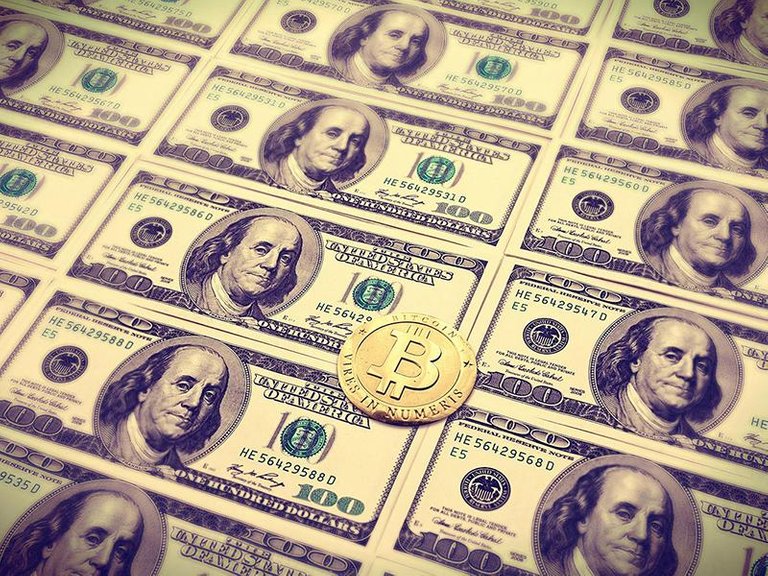Whether euro, US dollar or Swiss franc: All major currency currencies have lost massively in the last 12 months against the top 5 cryptos . In the meantime, more than US $ 90 billion has been invested worldwide in cryptosciences, and the trend continues to rise.

But what is the cause of this development? To be able to answer this question, one must first understand how the current banking system works and the differences between paper money and cryptic currency.
Cryptography Paper money - significant differences
The most striking difference between cryptanages and paper money is that cryptic payments are only available digitally, while paper money exists in physical form.
Paper currency currencies are central, cryptic decentralized. While a central authority (banknote) exists in the paper money system and prints money, there is no such central authority in cryptic currency. There is no bitcoin bank or the like.
Instead, cryptures are based on the blockchain , a kind of decentralized database that stores all the financial transactions that have ever been done.
While the central bank is responsible for an inflationary and therefore theoretically unlimited increase in the amount of money to supply the economic cycle with liquidity, the amount of money is generally limited in the case of cryptic payments. For Bitcoin , for example, the number of digital coins is limited to 21 million bitcoins. Thus cryptures have a deflationary character.
While paper money is transferred in the banking system via account numbers, digital currencies use addresses and cryptography. This encrypts private data and mathematically verifies identities.
While banks create the money practically from nothing ( money creation by means of credit ), cryptualities are calculated (mining) or generated by staking ( proof of work vs. proof of stake ).
Advantages of crypto payments against paper money
As a result, cryptoscripts have several advantages. In the crypto universe, banks do not create the money and lend it to interest, but users (miners) receive money for processing the payment transactions.
Users can thereby themselves cry cryptry and become thereby almost to their own bank.
Crypto procedures are used to eliminate the intermediary (banks, etc.), whereby money transfers can be carried out directly from one person to the next person. This makes money transfers possible in seconds and against small charges across national borders.
Through the use of cryptography, digital currencies are generally safer and more difficult to manipulate than in the paper money system. The transparency on the blockchain (transactions are evident to everyone) also makes corruption more difficult, which is why some states are now considering the use of blockchain in the public sector.
Disadvantages of crypto-payments against paper money
Due to the complete digitization, however, there are also disadvantages for cryptic methods.
If the Internet fails or the user does not have access to the global data network, no transactions can be executed or forwarded.
If the cryptor owner loses his private key or clears his wallet accidentally from the PC, the loss of the digital money threatens if there is no backup wallet or other security.
Payers or referrals to the wrong address will lead to the loss of digital money because there is no central location to which the user can turn. Therefore, crypto users should always check the address of a transfer.
Cryptography is more suitable for computer users, the acceptance in the classical trade is currently still low.
The past shows that cryptic threats are also not protected from hackers, which can be used to steal accounts or attack the system itself
Conclusion: cryptosciences offer more advantages than disadvantages
Crypto-cryptics are still in the children's shoes and sometimes suffer from scaling problems. Nevertheless, the advantages offered by cryptoscripts are the disadvantages of paper money.
The reason: cryptic payments give billions of people access to financial services that otherwise have no bank account. In developing countries in particular, almost 60% of adults are excluded from the banking system because they do not meet the minimum requirements for an account.
In addition, cryptic payments in countries with a weak currency (Venezuela, Zimbabwe, etc.) serve as a means of preservation and exchange. Crypto-related issues are also on the rise in companies and banks. At IBM, it is estimated that by the end of 2017, around 15% of banks will use blockchain techniques, as these financial transactions are more effective and less expensive.
However, the investor can also benefit from an investment in cryptos, as classic banks do not offer much more interest rates due to low interest rates, the cryptowel partial attracts interest rates well above the daily and fixed interest rate levels.
In addition, the investor can, of course, profit from the possible increase in value of the crypt diet. It should be noted, however, that cryptic stimuli are very volatile and can fluctuate strongly in price.
all your crypto updates available here on our website
https://coolwebcamavatars.com/